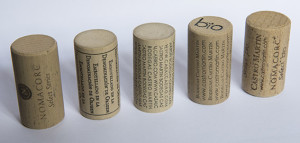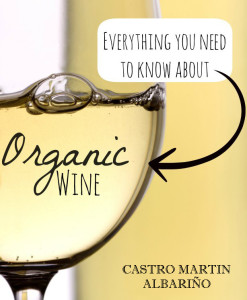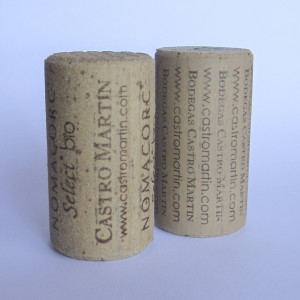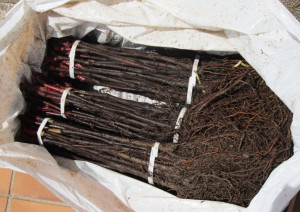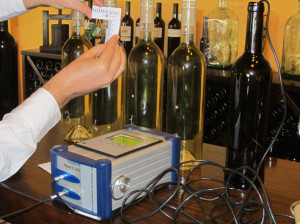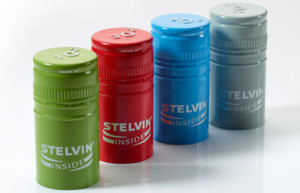The tasting calendar – fact or fiction?
January 30th, 2017 | Odds & Sods
[:en] A week or so ago I wrote about tasting the tanks of our 2016 wines, and the fact that that I had decided to taste them on a day determined by my 2017 Biodynamic tasting calendar. I have mentioned this calendar on previous occasions, but just to recap quickly, it suggests that wine will taste differently on different days of the month according to the phases of the moon. The best days are known as ‘fruit’ or ‘flower’ days, the bad days are ‘leaf’ or ‘root’.
A week or so ago I wrote about tasting the tanks of our 2016 wines, and the fact that that I had decided to taste them on a day determined by my 2017 Biodynamic tasting calendar. I have mentioned this calendar on previous occasions, but just to recap quickly, it suggests that wine will taste differently on different days of the month according to the phases of the moon. The best days are known as ‘fruit’ or ‘flower’ days, the bad days are ‘leaf’ or ‘root’.
I confess that I originally stumbled upon this idea more or less by accident, when I often imagined that our wines appeared to taste better on certain days of the week, but couldn’t really pinpoint the reason why. I subsequently read about the theory of tasting cycles and the biodynamic calendar, and despite remaining sceptical, decided to buy a copy. Of course, the power of suggestion is very strong, and we can all be influenced or have our perception changed by having a certain idea being offered to us in advance. Anyway, to cut a long story short, I find that this concept works for me, and the days that I chose to taste are now more often than not decided by a quick glance at the calendar. And I am not the only one – large organisations such as Tesco and Marks & Spencer, as well as important cellars such as Pol Roger and Maison Joseph Drouhin also use this calendar as a point of reference.
The reason that I am revisiting this subject now is simply because a New Zealand scientific study into the Biodynamic calendar has just been published. “The findings reported in the present study provide no evidence in support of the notion that how a wine tastes is associated with the lunar cycle,” the researchers concluded. The methodology was simple – 19 New Zealand wine professionals making blind tastings of 12 Pinot Noirs, four times, twice on a fruit day and twice on a root day, using 20 descriptors including aroma, taste and mouthfeel. They concluded that the lunar cycle did not influence their perceptions. (I should mention that atmospheric pressure was also taken into account as some believe that this can also influence taste).
Perhaps the surprising point is that despite these findings, some wine professionals (including MW’s) say that they still retain their faith in support of the calendar… including me![:es] A week or so ago I wrote about tasting the tanks of our 2016 wines, and the fact that that I had decided to taste them on a day determined by my 2017 Biodynamic tasting calendar. I have mentioned this calendar on previous occasions, but just to recap quickly, it suggests that wine will taste differently on different days of the month according to the phases of the moon. The best days are known as ‘fruit’ or ‘flower’ days, the bad days are ‘leaf’ or ‘root’.
A week or so ago I wrote about tasting the tanks of our 2016 wines, and the fact that that I had decided to taste them on a day determined by my 2017 Biodynamic tasting calendar. I have mentioned this calendar on previous occasions, but just to recap quickly, it suggests that wine will taste differently on different days of the month according to the phases of the moon. The best days are known as ‘fruit’ or ‘flower’ days, the bad days are ‘leaf’ or ‘root’.
I confess that I originally stumbled upon this idea more or less by accident, when I often imagined that our wines appeared to taste better on certain days of the week, but couldn’t really pinpoint the reason why. I subsequently read about the theory of tasting cycles and the biodynamic calendar, and despite remaining sceptical, decided to buy a copy. Of course, the power of suggestion is very strong, and we can all be influenced or have our perception changed by having a certain idea being offered to us in advance. Anyway, to cut a long story short, I find that this concept works for me, and the days that I chose to taste are now more often than not decided by a quick glance at the calendar. And I am not the only one – large organisations such as Tesco and Marks & Spencer, as well as important cellars such as Pol Roger and Maison Joseph Drouhin also use this calendar as a point of reference.
The reason that I am revisiting this subject now is simply because a New Zealand scientific study into the Biodynamic calendar has just been published. “The findings reported in the present study provide no evidence in support of the notion that how a wine tastes is associated with the lunar cycle,” the researchers concluded. The methodology was simple – 19 New Zealand wine professionals making blind tastings of 12 Pinot Noirs, four times, twice on a fruit day and twice on a root day, using 20 descriptors including aroma, taste and mouthfeel. They concluded that the lunar cycle did not influence their perceptions. (I should mention that atmospheric pressure was also taken into account as some believe that this can also influence taste).
Perhaps the surprising point is that despite these findings, some wine professionals (including MW’s) say that they still retain their faith in support of the calendar… including me![:]



